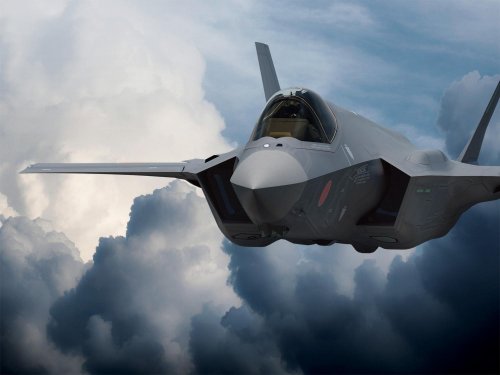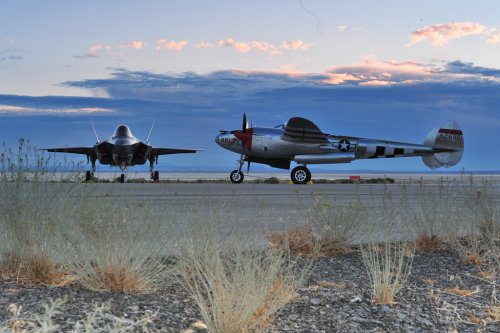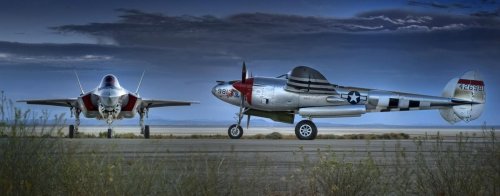Japan Selects F-35
Posted by Amy Butler at 12/19/2011 9:54 PM CST
The Japan Air Self-Defense Force has selected the F-35A as the winner of its F-X contest for 40-50 aircraft to replace F-4 Phantoms. The single-engine, stealthy Lockheed Martin jet wins over Boeing’s F/A-18E/F and the Eurofighter Typhoon.
Eleven nations are now expected to buy the jet, including those in the nine-member partnership established at the beginning of the program and two foreign military sales customers -- Japan and Israel.
Japan’s deal includes a work package for a domestic final-assembly-and-checkout facility much like Italy’s, as well as component and subcomponent build work in country. A value for the work package has not been provided.
Like Israel, the first nation not in the F-35 partnership to sign up for a buy, Tokyo wants its first aircraft in 2016; the contract for these first four F-35As is expected in Japan’s fiscal year 2012, beginning in April.
Japan’s decision is likely the first of more to come in favor of the F-35 in Asia. Singapore is linked with Israel and likely to follow its buy. And, South Korea is a strong possibility as it often seeks to equal Japan in purchasing high-technology defense equipment. Seoul is expected to hold a competition for 60 aircraft next year.
The aircraft for delivery in 2016 will be included in the low-rate initial production lot 8, and they will include the Block 3 software that the U.S. Air Force will require to declare initial operational capability of its new fleet.
The growing number of customers for F-35, backed by Japan’s decision, “reinforces the F-35 value proposition,” says Steve O’Bryan, Lockheed Martin’s F-35 business development VP. This proposition postulates that the more customers that sign on and add to production orders, the lower the F-35 per-unit cost. This remains, however, to be proven by actual contract prices. The Pentagon is now in negotiations with Lockheed Martin over LRIP 5 pricing after the two parties agreed to equally share the “concurrency cost,” or price to retrofit LRIP 5 jets based on findings in the testing program.
O’Bryan says that the company can accommodate additional sales in LRIP 8 to South Korea should the country follow Tokyo’s lead. “There is capacity available,” he told reporters on a late-night teleconference in the United States. “We have tooling available” for more jets in that lot.
With Israel and Japan signing on for deliveries in 2016, it is possible the Pentagon could further slow its early LRIP buys to reduce the concurrency facing Washington’s piece of the program between development and procurement ramp up without disrupting the overall total delivery number in that year.
O’Bryan suggests that Japan selected the F-35 in part because the work package offers workers access to advanced technologies and manufacturing techniques. “If they wanted to purchase more fourth-generation technology of aluminum and other older technologies, they already had that in the F-15 line,” said Steve O’Bryan, Lockheed Martin’s F-35 business development vice president. “With the F-35 they get advanced composite work, automated milling and machining [and] they also get advanced avionics.”
Both losing contestants remain in other competitions around the globe. Boeing has orders to continue its F/A-18E/F work in St. Louis until 2015, including sales to the United States Navy of the Super Hornet and EA-18G jammer model and Australia. The Super Hornet is also vying against the Dassault Rafale and Saab Gripen for a win of Brazil’s pending tender for 36 fighters.
Paul Lewis, a Boeing spokesman, notes that the Super Hornet is also a potential for forthcoming competitions in Malaysia, Denmark the United Arab Emirates and “other Middle Eastern nations.”
Typhoon, widely considered as least likely to win in Japan, remains alive in New Dehli’s competition to build 126 multirole fighters. BAE announced this fall it was cutting the production rate of Typhoons from 53 to 43; the company has a backlog of more than 260 aircraft, with more than 280 delivered.
Source:
http://www.aviationweek.com/aw/blogs/defense/index.jsp?plckController=Blog&plckBlogPage=BlogViewPost&newspaperUserId=27ec4a53-dcc8-42d0-bd3a-01329aef79a7&plckPostId=Blog%3a27ec4a53-dcc8-42d0-bd3a-01329aef79a7Post%3ac711918b-7a3b-45f5-9486-d4047341b1f1&plckScript=blogScript&plckElementId=blogDest
Posted by Amy Butler at 12/19/2011 9:54 PM CST
The Japan Air Self-Defense Force has selected the F-35A as the winner of its F-X contest for 40-50 aircraft to replace F-4 Phantoms. The single-engine, stealthy Lockheed Martin jet wins over Boeing’s F/A-18E/F and the Eurofighter Typhoon.
Eleven nations are now expected to buy the jet, including those in the nine-member partnership established at the beginning of the program and two foreign military sales customers -- Japan and Israel.
Japan’s deal includes a work package for a domestic final-assembly-and-checkout facility much like Italy’s, as well as component and subcomponent build work in country. A value for the work package has not been provided.
Like Israel, the first nation not in the F-35 partnership to sign up for a buy, Tokyo wants its first aircraft in 2016; the contract for these first four F-35As is expected in Japan’s fiscal year 2012, beginning in April.
Japan’s decision is likely the first of more to come in favor of the F-35 in Asia. Singapore is linked with Israel and likely to follow its buy. And, South Korea is a strong possibility as it often seeks to equal Japan in purchasing high-technology defense equipment. Seoul is expected to hold a competition for 60 aircraft next year.
The aircraft for delivery in 2016 will be included in the low-rate initial production lot 8, and they will include the Block 3 software that the U.S. Air Force will require to declare initial operational capability of its new fleet.
The growing number of customers for F-35, backed by Japan’s decision, “reinforces the F-35 value proposition,” says Steve O’Bryan, Lockheed Martin’s F-35 business development VP. This proposition postulates that the more customers that sign on and add to production orders, the lower the F-35 per-unit cost. This remains, however, to be proven by actual contract prices. The Pentagon is now in negotiations with Lockheed Martin over LRIP 5 pricing after the two parties agreed to equally share the “concurrency cost,” or price to retrofit LRIP 5 jets based on findings in the testing program.
O’Bryan says that the company can accommodate additional sales in LRIP 8 to South Korea should the country follow Tokyo’s lead. “There is capacity available,” he told reporters on a late-night teleconference in the United States. “We have tooling available” for more jets in that lot.
With Israel and Japan signing on for deliveries in 2016, it is possible the Pentagon could further slow its early LRIP buys to reduce the concurrency facing Washington’s piece of the program between development and procurement ramp up without disrupting the overall total delivery number in that year.
O’Bryan suggests that Japan selected the F-35 in part because the work package offers workers access to advanced technologies and manufacturing techniques. “If they wanted to purchase more fourth-generation technology of aluminum and other older technologies, they already had that in the F-15 line,” said Steve O’Bryan, Lockheed Martin’s F-35 business development vice president. “With the F-35 they get advanced composite work, automated milling and machining [and] they also get advanced avionics.”
Both losing contestants remain in other competitions around the globe. Boeing has orders to continue its F/A-18E/F work in St. Louis until 2015, including sales to the United States Navy of the Super Hornet and EA-18G jammer model and Australia. The Super Hornet is also vying against the Dassault Rafale and Saab Gripen for a win of Brazil’s pending tender for 36 fighters.
Paul Lewis, a Boeing spokesman, notes that the Super Hornet is also a potential for forthcoming competitions in Malaysia, Denmark the United Arab Emirates and “other Middle Eastern nations.”
Typhoon, widely considered as least likely to win in Japan, remains alive in New Dehli’s competition to build 126 multirole fighters. BAE announced this fall it was cutting the production rate of Typhoons from 53 to 43; the company has a backlog of more than 260 aircraft, with more than 280 delivered.
Source:
http://www.aviationweek.com/aw/blogs/defense/index.jsp?plckController=Blog&plckBlogPage=BlogViewPost&newspaperUserId=27ec4a53-dcc8-42d0-bd3a-01329aef79a7&plckPostId=Blog%3a27ec4a53-dcc8-42d0-bd3a-01329aef79a7Post%3ac711918b-7a3b-45f5-9486-d4047341b1f1&plckScript=blogScript&plckElementId=blogDest



